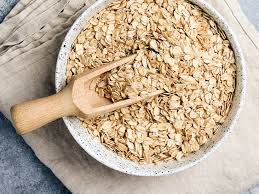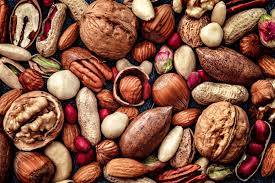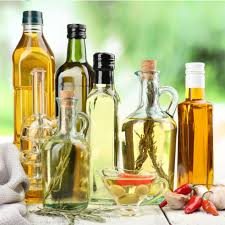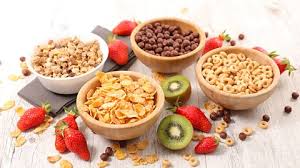This article examines the types, nutritional value, storage requirements, and culinary applications of cereals, nuts, fats, and oils. Cereals are cultivated grasses, but the term extends to include sago, rice, and arrowroot.
They serve as a major source of carbohydrates, offering significant health benefits and forming an essential dietary component. Fats and oils, being high-energy foods, are foundational in many classic recipes.
Important Cereals Used in Catering
The primary cereals used in catering include:
1. Wheat
i. Source: Wheat is the most common cereal in the Western world, grown in most temperate regions. Large quantities are produced domestically, with significant imports, particularly strong flour, from Canada.
ii. Nutritional Value: Cereals are among the best energy foods. Whole grain cereals provide B vitamins, making them a protective food.
iii. Wheat and Flour Quality: Flour varies in composition, defined by the quality of wheat used in the grist prior to milling and the extraction rate, which is the percentage of whole cleaned wheat grain present in the flour. A typical mill produces numerous flour types using a range of domestic and imported wheat.
- White flour: Contains 72–85% of the whole grain (endosperm only).
- Whole meal flour: Contains 100% of the whole grain.
- Brown flour: Contains 85–95% of the whole grain.
- High ratio or patent flour: Contains 40% of the whole grain.
- Self-rising flour: White flour with added baking powder.
- Semolina: Granulated hard flour from the central part of the wheat grain, used for couscous.
- Burghul (cracked wheat): Used in tabbouleh.
iv. Storage of Flour:
- Store flour in a dry, well-ventilated room.
- Remove flour from sacks and store in wheeled bins with lids.
- Ensure flour bins are easily cleaned.
v. Uses of Wheat Products
Flour is a cornerstone in daily culinary use, forming the foundation of:
- Bread
- Pastry
- Cakes
- Soups
- Sauces
- Batters
- Other foods Specific uses include:
- 1. Soft flour: Cakes, biscuits, pastes (except puff and flaky), thickening soups and sauces, batters, and coating foods.
- 2. Strong flour: Bread, puff and flaky pastry, and pasta.
- 3. Whole meal flour: Whole meal bread and rolls.
- 4. Semolina: Gnocchi, milk puddings.
2. Rye
i. Description: Rye flour, obtained from the cereal rye, is the only cereal besides wheat containing gluten proteins, though these are of lower quality and quantity.
Rye dough has a sticky, dense consistency, resulting in a low-volume baked product. Rye flour is available as light, medium, or dark, with the color and flavor of rye bread ranging from light and mild to dark and strong.
ii. Storage:
- Store in dry conditions at 10–16°C (50–61°F).
- Weigh rye flour accurately to ensure recipe balance, correct yield, uniform product, and to prevent faults.
iii. Uses
Rye flour is primarily used for rye bread.
Read Also: How To Start A Piggery Project
3. Oats

i. Source: Oats, one of the hardiest cereals, are grown in large quantities in Scotland and northern England.
ii. Nutritional Value: Oats have the highest nutritional value among cereals, containing significant protein and fat.
iii. Storage: Due to their fat content, oat products require extra care to maintain quality. Store in containers with tight-fitting lids in a cool, well-ventilated room.
iv. Forms and Uses:
- Rolled oats: Porridge.
- Oatmeal (coarse, medium, fine): Porridge, thickening soups, coating foods, cakes, and biscuits.
- Patent rolled oats: Heat-treated for quicker, easier cooking, largely replacing oatmeal.
4. Barley
i. Description:
- 1. Whole grain barley (pot or scotch barley): Requires overnight soaking, used for barley water, thickening soups, and certain stews.
- 2. Pearl barley: Polished with most bran and germ removed, used similarly.
- 3. Malted barley: Roasted barley used in brewing and vinegar distillation.
ii. Storage: Barley requires the same storage care as oats.
iii. Other: Buckwheat Seed of the bran buckwheat plant, usually roasted before cooking or ground into strong, savory flour for pancakes and baking.
5. Maize
i. Description: Maize, also known as corn, sweet corn, or corn-on-the-cob, is served as a vegetable and processed into cornflakes. It yields oil suitable for cooking.
ii. Corn Flour: Produced from maize, corn flour is the crushed endosperm with fat and protein removed, resulting in nearly pure starch. It thickens easily with liquid and sets into a smooth paste when cold, unlike other starches.
iii. Uses:
- Corn flour: Thickening soups, sauces, custards, and in certain cakes.
- Custard powder: Corn flour with added coloring and flavoring, used for custards and blancmange powders.
6. Rice
i. Description: Rice, the staple food for half the world’s population, is the second most important food grain after wheat.
ii. Types:
- Long grain: Narrow, pointed grain, ideal for savory dishes and plain boiled rice due to its firm structure (e.g., Basmati, Patna).
- Medium grain: All-purpose rice for sweet and savory dishes (e.g., Carolina, Arborio).
- Short grain: Short, rounded grain, best for milk puddings and sweet dishes due to its soft texture (e.g., Arborio).
- Brown rice: Retains bran, more nutritious.
- Whole grain rice: Whole and unprocessed.
- Wild rice: Seed of an aquatic plant related to rice, with a nutty flavor and chewy texture.
- Ground rice: Used for milk puddings.
- Rice flour: Used for thickening cream soups.
- Rice paper: Thin, edible paper used for macaroons and nougat.
- Precooked instant rice: Parboiled, ready-cooked, or boil-in-the-bag options.
iii. Storage: Store rice in tight-fitting containers in a cool, well-ventilated area.
7. Nuts

Nuts are the reproductive kernels (seeds) of plants or trees. They are perishable, prone to rancidity or insect infestation, and can cause severe allergic reactions in some individuals.
- i. Season: Dessert nuts are in season during autumn and winter.
ii. Nutritional Value: Nuts are highly nutritious, rich in protein, fat, and mineral salts, making them valuable for vegetarians as a meat substitute. They are body-building, energy-providing foods but can be difficult to digest.
iii. Storage:
- Dessert nuts (with shells): Store in a dry, ventilated area.
- Shelled nuts (ground, nibbed, flaked, or whole): Store in airtight containers.
iv. Quality and Purchasing Points:
- Nuts should be of good size and heavy for their size.
- No signs of mildew should be present.
v. Uses: Nuts are used extensively in pastry, confectionery, vegetarian cookery, decorating, and flavoring. They are used whole, halved, ground, nibbed, or flaked.
- vi. Types and Uses:
- Almonds: Salted for cocktails and bars; ground, flaked, or nibbed for sweet dishes and cake decoration; used in marzipan for pastry work.
- Brazil nuts: Served with fresh fruit as dessert or used in confectionery.
- Chestnuts: Used as turkey stuffing, in chestnut flour for soup, as a garnish for ice cream, or in puree for pastries and gateaux.
- Coconut: Desiccated for curries, cakes, and confectionery.
- Hazelnuts: Served as dessert or used for praline.
- Macadamia nuts: Rich, delicate, sweet flavor; used in pasta, savory sauces for meat, game, poultry, ice cream, sorbets, and puddings.
- Pecans: Salted for dessert, sweets, or ice cream.
- Peanuts and cashew nuts: Salted for bar snacks or used in stir-fry dishes.
- Pistachio nuts: Small green nuts from France and Italy, used for decorating galantines, cakes, and in ice cream.
- Walnuts: Used as dessert, in salads, for decorating cakes and sweet dishes, or pickled when green and unripe.
8. Fats
i. Lard: Rendered pig fat with nearly 100% fat content, used in hot water paste, with margarine for short paste, and for deep or shallow frying.
ii. Suet: Hard, solid fat from the kidney region of animals (beef suet is best), used for suet paste and mincemeat.
iii. Dripping: Clarified animal fat (usually beef), used for deep or shallow frying.
iv. Margarine: Produced from milk and a blend of vegetable oils emulsified with lecithin, flavoring, salt, coloring, and vitamins A and D.
a. Nutritional Value of Margarine: Margarine is an energy and protective food. Except for palm oil, oils used in margarine lack vitamins A and D, which are added during production, making it nutritionally comparable to butter.
b. Quality:
Margarine comes in several grades:
- Block (hard or semi-hard)
- Soft (butter substitute)
- Semi-hard for pastry
- Cake margarine (creams easily, absorbs egg)
- Blends with butter
Taste is the best guide to quality.
c. Uses: Margarine can substitute for butter but has a less pleasant smell and is unsuitable for producing nut brown (beurre noisette) or black butter (beurre noir). Its flavor is inferior to butter, making it less suitable for finishing sauces and dishes.
Read Also: Positive and Negative Effects of Drinking Garri
9. Oils

i. Choice of Oil
Selecting oil involves balancing:
- Price: Varies with supply and demand.
- Intended use: Some oils are versatile, others have limited applications.
- Durability: In use and storage.
- Nutritional and health concerns.
- Flash point: For frying, oil must reach high temperatures without smoking to avoid absorption by food. Oils are combustible and can catch fire (flash point), with some having a narrow margin between smoking and flash points.
ii. Nutritional Value
Oils, with high fat content, serve as energy foods.
iii. Stress
- Store oil in a cool place.
- Some oils congeal when refrigerated but return to a fluid state at room temperature.
- Oils keep for a fairly long time but may become rancid if not stored cool.
iv. Types of Oil
- Peanut (groundnut)
- Cottonseed
- Palm kernel
- Rapeseed
- Olive
- Coconut
- Soybean
- Sunflower
- Specialty oils (e.g., almond, palm, corn, grape seed, hazelnut, walnut)
- Herbal oils: Made by adding chopped fresh herbs (e.g., tarragon, thyme, basil) to olive oil, refrigerated in screw-top jars for about three weeks, then strained and rebottled. Blanching and refreshing green herbs enhances oil color.
v. Uses
Oils are used for:
- Mayonnaise
- Vinaigrette
- Hors d’oeuvres
- Pasta, certain doughs, and breads (olive oil)
- Deep frying
- Lubricating utensils and slabs
Careful selection and use of cereals, nuts, fats, and oils result in excellent culinary dishes. This article has detailed the types, nutritional value, storage, and uses of these ingredients in cookery. Periodic market surveys are recommended to ensure access to readily available options.
Do you have any questions, suggestions, or contributions? If so, please feel free to use the comment box below to share your thoughts. We also encourage you to kindly share this information with others who might benefit from it. Since we can’t reach everyone at once, we truly appreciate your help in spreading the word. Thank you so much for your support and for sharing!

